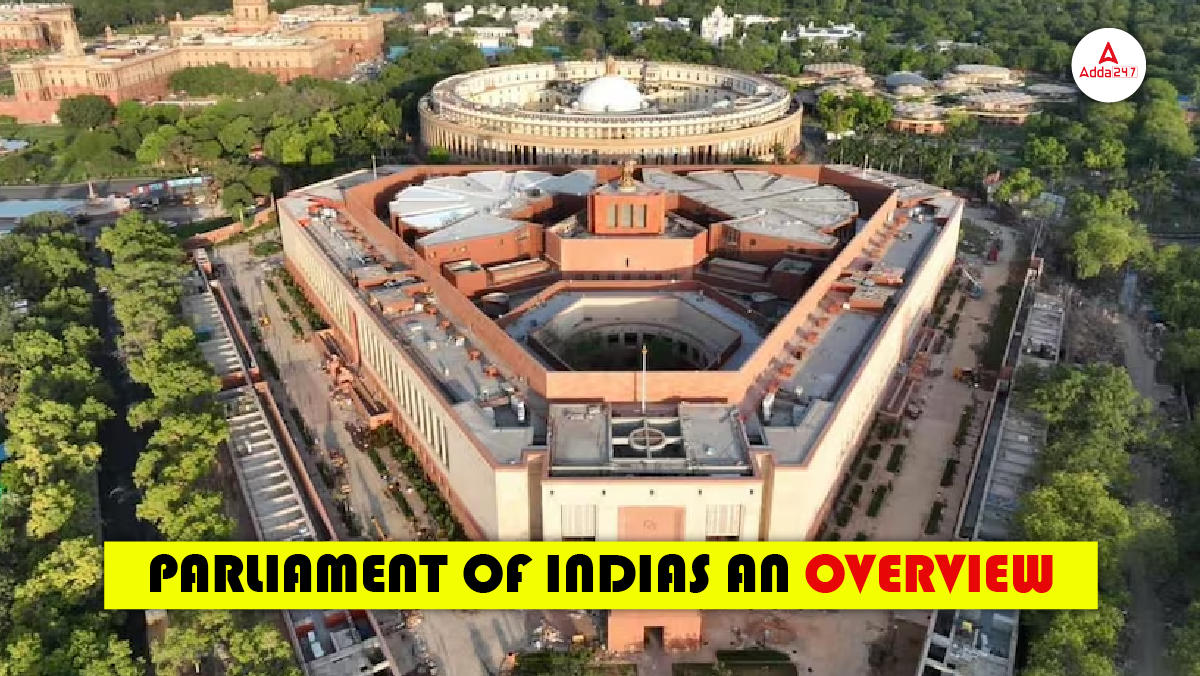Table of Contents
The Parliament of India, the supreme legislative body of the country, holds a pivotal role in the governance of the Nation. Established under the Constitution of India, it is a bicameral legislature comprising two houses: the Rajya Sabha (Council of States) and the Lok Sabha (House of the People), along with the President of India as an integral part. This article delves into the structure, functions, and Constitutional provisions of the Parliament, providing a comprehensive understanding of its role in shaping the laws and policies of the country.
The Structure of the Indian Parliament
The Indian Parliament is a bicameral legislature, reflecting the federal structure of the country. It consists of the Rajya Sabha (the upper house), and the Lok Sabha (the lower house).
- Rajya Sabha (Council of States): The Rajya Sabha represents the States and Union territories of India. It is a permanent body, not subject to dissolution, with one-third of its members retiring every two years. The maximum strength of the Rajya Sabha is 250, with 238 members representing the States and Union territories, elected indirectly by the members of State legislative assemblies, and 12 members nominated by the President of India for their expertise in art, literature, science, and social services.
- Lok Sabha (House of the People): The Lok Sabha represents the people of India and is composed of members directly elected by the citizens of the country through general elections. The maximum strength of the Lok Sabha is 552, with 530 members representing the states, 20 representing union territories, and two members nominated by the President from the Anglo-Indian community, though this provision was abolished by the 95th Amendment Act, 2009. The Lok Sabha has a term of five years, but it can be dissolved earlier by the President on the advice of the Council of Ministers.
Functions of the Parliament
The Parliament of India performs several critical functions, which can be broadly categorized into legislative, executive, financial, and judicial functions.
1. Legislative Functions: The primary function of the Parliament is to make laws. It can legislate on all matters listed in the Union List and Concurrent List. In case of conflicts between State and Central laws on Concurrent List items, the central law prevails. The Parliament can also legislate on matters in the State List under certain circumstances, such as during a National emergency or when a resolution is passed by the Rajya Sabha.
2. Executive Functions: The executive is accountable to the Parliament. The Parliament exercises control over the Executive by means of motions such as the no-confidence motion, adjournment motion, and censure motion. The Executive must resign if it loses the confidence of the Lok Sabha.
3. Financial Functions: The Parliament holds the ultimate authority over public finances. No tax can be imposed or expenditure incurred by the government without the approval of the Parliament. The annual Union Budget is presented to the Parliament for approval, and two Standing committees, the Public Accounts Committee and the Estimates Committee, oversee government spending.
4. Judicial Functions: The Parliament has the power to impeach the President, Vice President, and Judges of the Supreme Court and High Courts for violation of the Constitution. It also has the authority to punish its members for breach of privilege.
Constitutional Provisions
The structure and functions of the Indian Parliament are governed by the Constitution of India, specifically under Articles 79 to 122. These Articles detail the composition, powers, privileges, and procedures of the Parliament.
- Article 79: Establishes the Parliament of India, comprising the President, the Rajya Sabha, and the Lok Sabha.
- Article 80: Outlines the composition and method of election of the Rajya Sabha.
- Article 81: Details the composition of the Lok Sabha, including the allocation of seats.
- Article 83: Specifies the duration of the two houses, with the Rajya Sabha being a permanent body and the Lok Sabha having a term of five years.
- Article 368: Provides the Parliament with the power to amend the Constitution, although it cannot alter the basic structure, as upheld by the Supreme Court in the landmark case Kesavananda Bharati v. State of Kerala (1973).
Conclusion
The Parliament of India plays a vital role in the democratic governance of the country. Through its legislative, executive, financial, and judicial functions, it ensures that the laws and policies of the Nation are made and implemented in accordance with the will of the people. The Constitutional provisions that govern the Parliament provide a robust framework for its functioning, enabling it to act as the supreme legislative body in the Indian political system. As the representative of the people and the States, the Parliament is central to the functioning of Indian democracy, ensuring the balance of power and the rule of law.



 TSPSC Group 1 Question Paper 2024, Downl...
TSPSC Group 1 Question Paper 2024, Downl...
 TSPSC Group 1 Answer key 2024 Out, Downl...
TSPSC Group 1 Answer key 2024 Out, Downl...
 UPSC Prelims 2024 Question Paper, Downlo...
UPSC Prelims 2024 Question Paper, Downlo...




